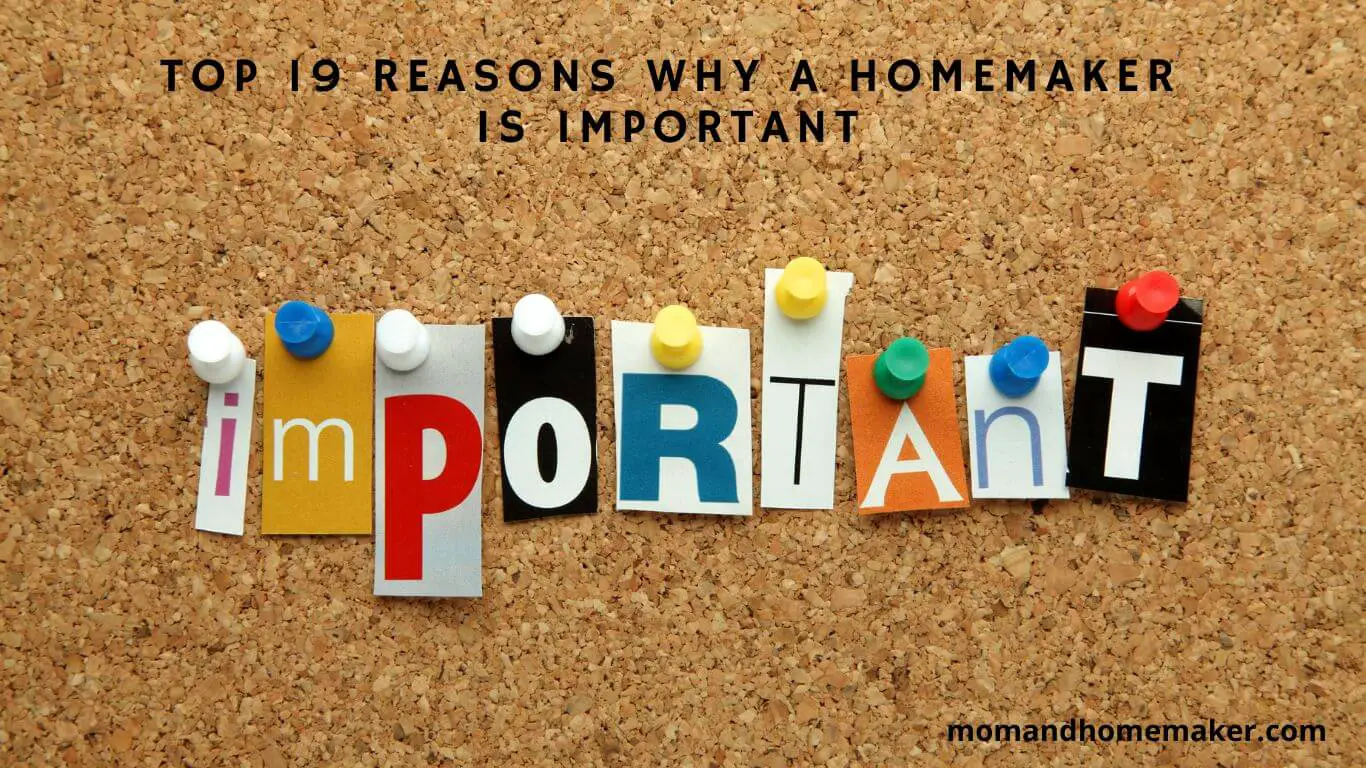Keeping a clean and safe home is a top priority for any pet owner. Our furry friends bring us joy and companionship, but they also come with their fair share of messes and potential hazards. From shedding fur to muddy paws, pets can leave their mark on our homes in more ways than one.
That’s why it’s essential to implement pet-friendly home maintenance practices that not only promote cleanliness but also ensure the safety of our beloved pets.
From controlling pet hair to removing stains and odors, we’ve got you covered. Discover pet-safe cleaning products, vacuuming tips, and ways to prevent pet-related allergies.
With our expert advice, you can create a space that fosters belonging for both you and your beloved pet.

Pet Hair Control
To control pet hair in your home, regularly brush your furry friend and invest in a high-quality vacuum cleaner. Pet hair shedding is a common issue for pet owners, but with the right strategies, you can effectively reduce pet hair and prevent buildup.
Regularly brushing your pet helps to remove loose hairs and prevent them from ending up all over your house. Investing in a high-quality vacuum cleaner specifically designed for pet hair removal is also essential. Look for vacuum cleaners with strong suction power and specialized attachments for removing pet hair from carpets, furniture, and other surfaces.
There are various pet hair control products available in the market, such as lint rollers, pet hair remover gloves, and furniture covers, which can further aid in keeping your home free from pet hair.
Removing Pet Stains and Odors
To effectively remove pet stains and odors from your home, you need to address them promptly and use the right cleaning products and techniques. Whether it’s a urine stain on the carpet or a lingering smell on your upholstery, taking immediate action is crucial to prevent further damage and maintain cleanliness. Here are some stain removal techniques and odor control tips to help you keep your home fresh and pet-friendly:
| Pet Stain Removal Techniques | Odor Control Tips |
|---|---|
| Blot the stain with a clean cloth or paper towel | Use baking soda to absorb odors |
| Mix a solution of water and vinegar to clean the area | Place odor-neutralizing products like activated charcoal or pet-friendly air fresheners |
| Apply a pet stain remover specifically designed for carpets | Wash pet bedding regularly |
| Consider professional carpet cleaning for tough stains | Open windows to improve air circulation |
Pet-Safe Cleaning Products
When it comes to cleaning your home, it’s important to consider the safety of your furry friends. Many conventional cleaning products contain chemicals that can be harmful to pets if ingested or inhaled.
Luckily, there are pet-safe cleaning alternatives available. Look for natural pet-friendly cleaners or consider making your own homemade pet-safe cleaning solutions using ingredients like vinegar, baking soda, and lemon juice. These eco-friendly pet cleaning products are non-toxic and gentle on your pet’s sensitive skin.
Vacuuming Tips for Pet Owners
Pet hair maintenance is crucial to creating a clean and safe environment for both you and your furry friend.
When choosing a vacuum cleaner, consider reading vacuum cleaner reviews to find one that’s specifically designed for pet hair removal. Look for models with strong suction power and specialized attachments for removing pet hair from furniture and upholstery.
Opt for pet-safe cleaning solutions to ensure your pet’s safety during the cleaning process.
To effectively remove pet hair from carpets, use carpet cleaning techniques such as vacuuming in different directions and using a rubber brush to loosen embedded hairs.
Preventing Pet-Related Allergies
Regular vacuuming of your pet’s favorite spots is an essential step in preventing pet-related allergies, as it helps to remove pet hair and dander from your home. But there are other measures you can take to further reduce allergens and create an allergy-friendly environment for both you and your pet.
Here are some tips:
- Consider hypoallergenic pet breeds: Some breeds, such as poodles and bichon frises, are known to produce fewer allergens than others. If you or a family member suffer from pet hair allergies, these breeds may be a good option.
- Control pet dander: Regular grooming and bathing can help to minimize the amount of dander your pet produces. Use a pet-friendly shampoo and brush your pet’s coat regularly to remove loose hair and dander.
- Reduce allergens in pet bedding: Wash your pet’s bedding frequently in hot water to eliminate allergens. Opt for hypoallergenic bedding materials that are less likely to trap pet hair and dander.
Pet-Friendly Flooring Options
Opt for flooring options that are pet-friendly, durable, and easy to clean. When choosing flooring for your home with pets, there are several factors to consider. You want to ensure that the flooring is safe for your pets, as well as easy to maintain and long-lasting. Here are some pet-friendly flooring options to consider:
| Pet-Friendly Flooring Options | Key Features |
|---|---|
| Eco-friendly alternatives | Made from sustainable materials |
| Waterproof options | Resistant to spills and accidents |
| Non-slip surfaces | Provides traction for your pets |
| Low maintenance choices | Easy to clean and maintain |
| Durable materials | Withstands pet activity and wear |
Cleaning Pet Toys and Accessories
Clean your pet toys and accessories regularly to maintain cleanliness and ensure the safety of your furry friends. Here are some essential tips for cleaning and sanitizing various pet items:
- Cleaning pet bowls: Wash pet bowls with warm soapy water after each meal to remove food residue and prevent bacterial growth. Rinse thoroughly and let them air dry before use.
- Sanitizing pet toys: Regularly clean your pet’s toys by soaking them in a mixture of water and pet-safe disinfectant. Scrub gently to remove dirt and grime, then rinse and air dry before giving them back to your pet.
- Washing pet bedding: Launder your pet’s bedding regularly using pet-friendly detergent. Opt for a hot water cycle to kill any germs or parasites. Dry the bedding completely to prevent mold growth.
- Disinfecting pet accessories: Wipe down pet accessories like leashes, collars, and harnesses with pet-safe disinfectant wipes or a solution of water and vinegar. This will help remove dirt and bacteria, keeping them clean and safe for your pet.
- Sterilizing pet grooming tools: Clean and sterilize grooming tools, such as brushes and nail clippers, after each use. Wash them with warm soapy water, rinse thoroughly, and let them air dry. For extra protection, use a pet-safe disinfectant spray or soak them in a solution of water and bleach (follow instructions carefully).
Maintaining a Clean Litter Box
To keep your litter box fresh and hygienic, regularly scoop out waste and replace the litter as needed. Clean litter is important for both your pet’s health and the overall cleanliness of your home.
Scooping out waste daily will prevent odor buildup and keep your cat’s litter box clean. It’s also essential to thoroughly clean the litter box at least once a week.
To clean the litter box, empty the litter, wash the box with mild soap and water, and dry it completely before adding fresh litter. This will help maintain proper litter box hygiene and prevent the growth of bacteria.
Consider using litter that’s specifically designed for odor control to further minimize any unpleasant smells in your home.
Pet-Proofing Your Home
Ensure the safety of your furry friends by pet-proofing your home. Here are some pet-proofing tips to create a pet-friendly environment for your four-legged family members:
- Invest in pet-friendly furniture: Opt for stain-resistant fabrics and materials that are easy to clean. Look for furniture with removable and washable covers to tackle any accidents.
- Choose pet-friendly home decor: Avoid fragile or breakable items that can be knocked over by curious pets. Opt for non-toxic plants and decorations that are out of reach.
- Create pet-friendly outdoor spaces: Secure your yard with a fence to prevent your pet from wandering off. Provide shade and fresh water for them to stay comfortable while enjoying the outdoors.
- Utilize pet-friendly cleaning hacks: Use pet-friendly cleaning products to ensure their safety. Keep cleaning supplies securely stored and out of your pet’s reach.
Pet-Friendly Plants and Gardens
When creating a pet-friendly home, it’s important to consider incorporating pet-friendly plants and gardens into your space.
Pet-friendly indoor plants are a great way to bring greenery into your home without compromising the safety of your furry friends. Some popular options include spider plants, Boston ferns, and African violets.
For outdoor gardens, it’s important to choose plants that are safe for pets. Avoid toxic plants such as lilies, azaleas, and daffodils, and opt for non-toxic alternatives like sunflowers, marigolds, and petunias.
When it comes to fertilizers, make sure to use pet-safe options that are free from harmful chemicals. Consider pet-friendly weed control methods to keep your garden safe and healthy.
With these tips, you can create a beautiful and pet-friendly garden that both you and your furry friend can enjoy.
Preventing Pet Chewing and Scratching
- To prevent pet chewing and scratching, keep your furry friend entertained with safe and engaging toys.
- Provide plenty of chew toys specifically designed for pets to redirect their chewing behavior.
- Consider using deterrent sprays on furniture or other items you want to protect from scratching or chewing.
- Utilize alternative chewing toys, such as puzzle toys or treat-dispensing toys, to keep your pet mentally stimulated and focused on appropriate chewing.
- Implement pet training techniques to discourage chewing and scratching.
- Crate training can be an effective method to limit access to certain areas and prevent destructive behavior.
- Teach your pet the ‘leave it’ command to redirect their attention away from items they shouldn’t chew or scratch.
- Positive reinforcement training can help reinforce good behavior and discourage destructive habits.
- Provide scratching posts or boards for your pet to satisfy their natural scratching instinct.
- Place scratching posts in strategic locations throughout your home to encourage your pet to use them instead of furniture.
- Opt for scratching posts made of sisal or cardboard, as these materials are more appealing to cats.
- Regularly trim your pet’s nails to minimize the damage caused by scratching.
Grooming Tips for Cleanliness
Keep your pet clean and groomed to maintain a hygienic environment in your home. Regular pet grooming is essential for shedding control, pet hygiene, and overall cleanliness.
Brush your pet’s coat regularly to remove loose fur and prevent it from spreading around the house. This will also help reduce the amount of pet hair on your furniture and carpets.
Make sure to clean your pet’s paws after walks to prevent dirt and debris from being tracked indoors.
Paying attention to your pet’s dental care is also crucial for their hygiene. Brush their teeth regularly using pet-friendly toothpaste and provide dental treats or toys to help keep their teeth clean and healthy.
Cleaning up After Outdoor Adventures
To maintain a clean and hygienic living environment for both you and your furry friend, it’s important to clean up after your pet’s outdoor adventures. Outdoor cleanliness is essential in ensuring a healthy and enjoyable space for everyone.
Here are some tips for efficiently cleaning up after your pet’s outdoor escapades:
- Paw cleaning: Keep a towel or pet wipes by the door to quickly wipe your pet’s paws before they enter the house. This will prevent muddy paws from tracking dirt inside.
- Muddy paws prevention: Consider using paw covers or booties to protect your pet’s paws from getting muddy during outdoor activities.
- Cleaning outdoor gear: Regularly clean and sanitize your pet’s outdoor gear, such as leashes, harnesses, and toys, to remove dirt, bacteria, and odors.
Keeping Pet Bedding Clean
Regularly washing your pet’s bedding is essential for maintaining cleanliness and ensuring a comfortable sleep environment. Pet bedding can accumulate dirt, hair, and odor over time, so it’s important to establish a regular routine for cleaning and maintaining it. Here are some tips for pet bedding maintenance:
| Washing Pet Bedding | Drying Pet Bedding | Storing Pet Bedding |
|---|---|---|
| Use a pet-safe detergent | Air dry if possible | Store in a clean, dry area |
| Follow washing instructions on the bedding label | Follow the washing instructions on the bedding label | Avoid storing in damp or humid areas |
| Wash bedding at least once a month | Shake out excess hair before washing | Keep bedding away from direct sunlight |
| Consider using a waterproof mattress protector | Fluff and reshape bedding after drying | Replace bedding if it becomes worn or damaged |
Managing Pet Dander
To maintain cleanliness and reduce allergens in your pet-friendly home, it’s important to effectively manage pet dander. Here are three tips to help you control and prevent dander, reducing the risk of pet dander allergies:
- Regular grooming: Brushing your pet regularly helps to remove loose fur and dander from their coat. This can significantly reduce the amount of dander that’s shed in your home.
- Vacuuming and dusting: Regularly vacuuming your carpets and upholstery, as well as dusting surfaces, can help to remove dander that has settled. Use a vacuum with a HEPA filter for maximum effectiveness.
- Air purifiers: Consider using an air purifier with a HEPA filter to capture and remove airborne dander particles. This can help to improve air quality and reduce allergens in your home.
Pet-Friendly Upholstery and Fabrics
For clean and pet-friendly upholstery and fabrics, choose materials that are resistant to stains and easy to clean. When it comes to pet-friendly upholstery options, opt for fabrics such as microfiber, leather, or synthetic blends. These materials are durable and can withstand pet hair, stains, and odors.
When choosing pet-friendly fabrics, consider ones that have a tight weave or a stain-resistant finish to help prevent pet stains from penetrating the fabric. To clean pet hair from upholstery, use a lint roller, a damp cloth, or a vacuum cleaner with a pet hair attachment.
To remove pet odors from upholstery, sprinkle baking soda on the fabric, let it sit for a few hours, and then vacuum it up. Regularly cleaning and maintaining your upholstery will help keep it fresh and pet-friendly.
Storing Pet Supplies Efficiently
Keep your pet supplies organized and easily accessible with efficient storage solutions. Here are some space-saving tips to help you organize and maximize your storage:
- Utilize vertical space: Install shelves or wall-mounted storage units to keep pet supplies off the floor and within reach.
- Use storage bins or baskets: Label them with the type of supplies they hold, such as toys, grooming essentials, or food.
- Consider multi-functional furniture: Opt for pet beds that have built-in storage compartments or ottomans with hidden space for supplies.
By implementing these efficient storage solutions, you can declutter your home and create a designated area for your pet’s supplies. This not only makes it easier to find what you need but also helps maintain a clean and organized living space.
Preventing Flea and Tick Infestations
If you want to maintain a clean and safe home for your pet, it’s important to take preventative measures against flea and tick infestations. Fleas and ticks can cause discomfort and health issues for your pet, so it’s crucial to implement flea prevention and tick control strategies.
Start by ensuring that your yard is pet-friendly by keeping the grass trimmed and removing any stagnant water sources. Use natural remedies like essential oils or vinegar sprays to repel fleas and ticks from your pet’s bedding and living areas.
Regularly inspect your pet for any signs of infestation, such as excessive scratching or visible bugs. If you’re unable to manage the infestation on your own, consider seeking professional pest control services to eradicate the problem effectively.
Pet-Safe Pest Control Methods
Implement pet-safe pest control methods to ensure the cleanliness and safety of your home for your furry friend. Here are some tips to help you keep pests at bay while keeping your pet’s well-being in mind:
- Use natural repellents like citronella, lavender, or lemon to deter pests without harming your pet.
- Consider hiring pet-friendly exterminators who use safe and non-toxic pest control methods.
Try DIY pest control methods, such as:
- Sealing cracks and gaps.
- Keeping food stored securely.
- Maintaining a clean living environment.
- Look for pet-safe insecticides that are specifically formulated to be harmless to animals.
- Explore non-toxic pest remedies like vinegar, baking soda, or diatomaceous earth, which can be effective in controlling certain pests.
Cleaning up After Accidents
To maintain a clean and safe environment for your pet, it’s important to address the task of cleaning up after accidents promptly and effectively. Accidents happen, especially during the potty training phase, but with the right approach, you can keep your home clean and odor-free.
When it comes to cleaning up vomit, start by removing any solid material, then blot the area with a paper towel. Next, apply a mixture of water and mild detergent to clean the spot thoroughly.
For urine stains, blot the area with a paper towel to absorb as much liquid as possible, then apply an enzyme-based cleaner to break down the odor-causing bacteria. To remove pet hair from carpets, use a vacuum cleaner with a brush attachment or a lint roller.
Maintaining Clean and Fresh Pet Breath
Keep your pet’s breath fresh and clean with regular dental care. Maintaining good oral hygiene is essential for your pet’s overall health and well-being. Here are some tips to help you ensure fresh breath and prevent bad breath in your furry friend:
- Brush your pet’s teeth regularly using pet-specific toothpaste and a soft-bristled toothbrush. Aim for at least two to three times a week.
- Provide dental treats or chews that are designed to promote oral health and reduce plaque buildup.
- Consider using water additives or oral sprays that can help fight bacteria and freshen your pet’s breath.
By incorporating these practices into your pet’s routine, you can effectively maintain their oral hygiene and keep their breath fresh.
Pet-Safe Air Purifiers and Filters
Air purifiers offer a range of benefits when it comes to improving indoor air quality. They help remove allergens, pet dander, and odors, creating a healthier environment for both you and your furry friend.
When choosing a filter, consider the different types available, such as HEPA filters, which are highly effective at capturing small particles. Look for pet-friendly options that specifically target pet hair and dander.
Regular maintenance is essential to keep your air purifier functioning properly. This includes changing filters as recommended by the manufacturer and cleaning the unit regularly.
Cleaning Pet Dishes and Feeding Areas
Cleaning your pet’s dishes and feeding areas regularly is important for maintaining a hygienic environment. Here are some essential tips for ensuring feeding area cleanliness and keeping your pet’s dishes germ-free:
- Sanitizing pet dishes: Wash your pet’s food and water bowls with hot, soapy water after each use. Consider using a pet-safe dishwasher or a dedicated sponge for their dishes. This helps eliminate any food residue and prevents bacteria growth.
- Cleaning pet water bowls: Change your pet’s water frequently, at least once a day, and wash the water bowl thoroughly to prevent the buildup of algae, slime, and bacteria. Scrubbing the bowl with a mild bleach solution can also help sanitize it.
- Proper food storage: Store your pet’s food in airtight containers to maintain its freshness and prevent pests from accessing it. Avoid leaving food out for extended periods, as it can attract insects and lead to contamination.
Organizing Pet-Related Paperwork and Records
Stay on top of your pet’s paperwork and records by organizing them in a designated area for easy access and peace of mind.
Organizing pet-related paperwork is crucial for ensuring that you have all the necessary information readily available whenever needed. Start by creating separate folders for different types of documents, such as pet insurance, microchip registration, pet adoption paperwork, veterinary records, and pet licensing documentation. Label each folder clearly to avoid any confusion.
Keep these folders in a secure and easily accessible location, like a filing cabinet or a drawer. Regularly update the folders with the latest information and discard any outdated documents.
Pet-Friendly Storage Solutions
By incorporating pet-friendly storage solutions, you can easily maintain a clean and organized living space for you and your furry companion. Here are some tips to help you create a pet-friendly storage system:
- Pet-Friendly Toy Storage: Designate a specific area or bin for your pet’s toys to keep them organized and easily accessible. This will also prevent them from getting scattered around the house.
- Pet-Friendly Pantry: Keep your pet’s food and treats in a designated area in the pantry. Use airtight containers to ensure freshness and prevent pests from getting to the food.
- Pet-Friendly Closet Organization: Dedicate a section of your closet for your pet’s belongings, such as leashes, collars, and grooming supplies. Use hooks or baskets to keep everything neatly stored.
- Pet-Friendly Garage Storage: Create a designated area in the garage for your pet’s outdoor toys and equipment. Install hooks or shelves to keep everything organizedhttps://momandhomemaker.com/the-best-ways-to-organize-your-outdoor-equipment-and-supplies/ and easily accessible.
- Pet-Friendly Bathroom Storage: Store your pet’s grooming supplies, such as shampoo and brushes, in a designated basket or shelf in the bathroom. This will make grooming time more convenient and organized.
Conclusion
Maintaining a pet-friendly home requires attention to cleanliness and safety. By following these tips, you can effectively control pet hair, remove stains and odors, and ensure the use of pet-safe cleaning products.
Vacuuming regularly, preventing allergies, and using pet-safe air purifiers and filters are essential for a healthy environment.
Don’t forget to clean pet dishes and feeding areas, and stay organized with pet-related paperwork.
A clean and safe home is a happy home for both you and your furry friend.













